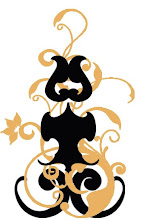I am very sorry to report that this years' Whitney Biennial is an extension of the
last one, only perhaps a teensy little bit lamer and more half-assed.
O was with me; looking at the expression on my face, she declared, "I think you're taking this a little bit too personally."
It was true, I
was taking it personally. There seemed to be no curatorial vision or thematic direction for this exhibition at all, except perhaps for Tim Hawkinson and Gordon Matta-Clark Redux, Half-Baked and Ripped-Off. The vast majority of sculptures and installation-type thingies did not read as finished works of art at all; they came across as sketches and machettes for the sorts of ideas that get fooled around with for awhile, then discarded as not being sufficiently compelling. There was a lot of raw lumber, badly crafted and gracelessly arranged; a lot of garbagey goop suspended in plaster, concrete or resin; a lot of bare lightbulbs purposelessly attached to random structures; and a lot of construction materials just leaning around.
There was also
Robert Bechtle. God knows why.
However. Here are the artists whose installations were a little bit better than contemptibly forgettable:
Matthew Brannon. Very nice letterpress prints with random, poetic textual snippets, giving the work a whimsically contemplative texture. White noise generators in the corners muted the assaultive noises from outside video installations, allowing you to calm down and actually focus on the work. Enigmatic wall sculptures of ordinary objects were, well, enigmatic. But cute.
Ellen Harvey. Her installation, "
Museum of Failure: Collection of Impossible Subjects and Invisible Self-Portrait in my Studio" was a bit klunky, but it began to engage your perceptions in an interesting way, with levels and windows and ornate frames and mirrors and real lights vs. painted lights. She's an okay painter, not a great one, but competent enough not to look like a total dork when relying on painting to integrate with a larger installation. Check out her website; she used to paint tiny oil landscapes on graffiti-covered walls in NYC. Which is something I might have done. Except that tiny oil landscapes bore me.
(But I promised myself to be more positive. Positive! Cheery smile!)
Mika Rottenberg. Seriously hilarious and well-executed installation involving a sort of a shed/goat run, containing several videos of women with The Longest Hair In The World (the hair is real--she advertised on the Internet for them) milking their hair into buckets, and waving the hair at donkeys and goats. Feminist Fairy Tales, mmm-mmm.
Jedediah Caesar. Impressive big ol' lump of multicolored, porous resin, which looked like a gigantic block of drips from a hundred thousand multicolored candles; smelled like it, too. Also a wall of resin tiles full of random garbage. This actually worked, unlike most of the other garbage in the show; I'd tile my bathroom with it. My High Art outdoor bathroom in my avant-garde architect-designed house in the Andes.
Near misses:Phoebe Washburn. Her installation for this Biennial appears to have been a bit of a departure from her earlier work; instead of creating tidal poetry with raw trash, she has created what ought to be a set for a comic surrealist film. More raw lumber (unfortunately) creates a towering framework for a 'soda factory' involving drawers full of colored golf balls, buckets of chrysanthemums, tanks of colored water, sprouting bulbs, and lots of hand towels. The title is something long and amusing which I've forgotten.
(In fact, a lot of artists in this show seemed to have appended long, strange titles to inscrutable works, sometimes two or three titles per work. Presumably to deepen the mystery. As if we cared.)
Charles Long. Sculptures intended to resemble encrusted birdshit. It is a testament to how uninspiring this exhibition was as a whole that I actually paid attention to these.
Rita Ackerman. Human sized drawing-collages under Plexiglass. Meh.
Karen Kilimnick. Four small, bright, mediocre paintings on four large walls, with a chandelier in the center. The way these were installed
began to charge the space in an interesting way; I filed this idea for future reference, to be used with some
good paintings and an
original chandelier-type sculpture.
There were a few other things that weren't entirely bankrupt, from an aesthetic, conceptual or structural perspective, but now that I look at my notes, not enough to be worth mentioning.
In fact, after viewing this exhibition, I thought, "I could curate a better Biennial than this." Tune in next time for my submissions; suggestions welcome, with extreme prejudice.


































